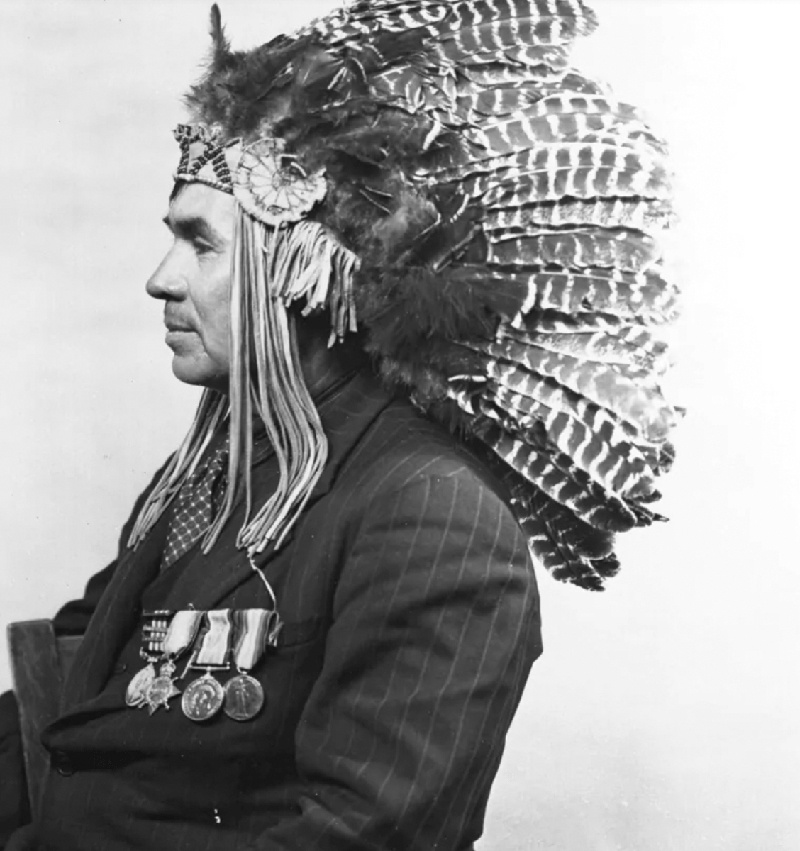
Francis Pegahmagabow, 1889–1952, was a remarkable aboriginal leader who served his nation in a time of war and his people in time of peace. An Ojibway of the Caribou clan, Francis Pegahmagabow was born in Shawanaga First Nation, just south of Pointe-au-Baril.
He volunteered at the onset of the First World War and served overseas in Belgium and France as a scout and sniper with the Canadian Expeditionary Force’s 1st Battalion.
Through the horrific battles and inhumane conditions of trench warfare, his selfless actions earned him three decorations for bravery. His acts inspired the central fictional character in Joseph Boyden’s highly-acclaimed 2005 novel Three Day Road.
Physically and emotional scarred by his wartime service, Francis returned to Parry Island (Wasauksing First Nation) to rebuild his life. He was treated as an equal in the army but quickly discovered that life for Indigenous people in Canada had not changed in the time he had been gone. As a status Indian his life was regulated by the infamous Indian Act and by local Indian agents who were an impediment to social justice.
Francis Pegahmagabow was not satisfied with the inequality he saw and set upon a path to improve life for his people. To this end, he was elected Chief of Wasauksing First Nation and served from 1921 to 1925 and from 1942 to 1945, and as a Councillor from 1933 to 1936.
In 1943, he demonstrated peacefully in Ottawa for Indigenous people’s rights and self-government. That same year, Pegahmagabow and other Native leaders founded the Brotherhood of Canadian Indians, the first national Aboriginal organization. In 1949 and 1950 he was elected the supreme Chief of the National Indian Government.
A leading advocate for First Nation rights, Francis Pegahmagabow provided distinguished service to his homeland and honour to the Nishnaabe Nation. A member of Canada’s Indian Hall of Fame, Francis Pegahmagabow died on the reserve in 1952.
He is proudly remembered by his extended family on Parry Island where his gravestone stands as a tribute to a great Canadian.
— by Doug Ferguson